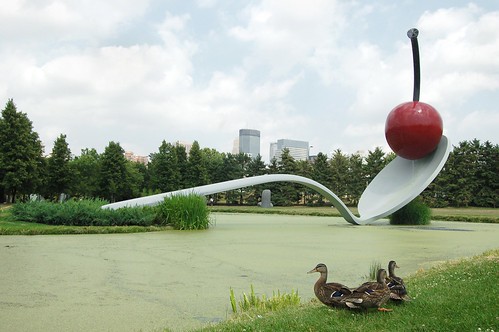In the 14 days since my last post, I traveled from the forty-fifth to the fiftieth parallel and back. Could a trip to Canada be phenological time travel? Would I find myself stepping back to an earlier point in spring?
 |
| Location A (Minneapolis Sculpture Garden) |
 |
| Location B (western Ontario) |
Well, that's a nice theory, but it turns out that contrasting
Location A with
Location B is a bit like the proverbial comparison of apples to oranges. Sure, up North the foliage was still tinged with spring's yellow-green, the lilacs were freshly blooming, and the water was colder. But the ecological landscapes were vastly different from one another. By traveling 5° north, I had left the deciduous forest and entered the boreal forest. The phenological players (plants, animals, etc) were so different that their life cycle events were not so much
behind as they were simply
incomparable. So, while I was on leave from
Location A, here's a quick survey of phenological events at
Location B:
Common Loons with chicks; Yellow Warblers tending a nest; Small-mouth bass nesting; dragonflies abundant; mayflies present; tiger swallowtails frequently sighted; mosquitoes scarce; no saturniids (Luna or Polyphemus moths) observed; Flowering plants included: pink lady slippers, star flowers, mountain ash, wild blueberries, wild iris, bunch berry, wild rose, columbine, and spotted coral root; Mosses' calyptra were still in place over developing capsules (click here for diagram, here for photo)
And as for Location A? A quick glance back to how I left things:
 |
| May 27: Nasturtium in the Garden's Arbor |
 |
| June 10: American Robin |
Phenology is about continuity. To succeed at this science, one must tend to a given locality with regularity. So, tomorrow as I resume my periodic surveys of the familiar
Location A, I wonder what changes (incremental or monumental) may have occurred for this nasturtium plant? Or this robin?




No comments:
Post a Comment